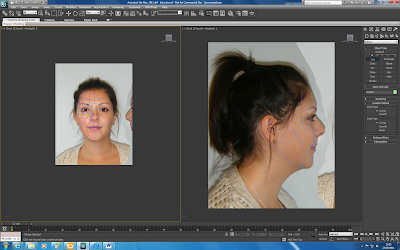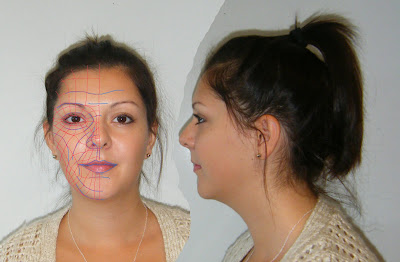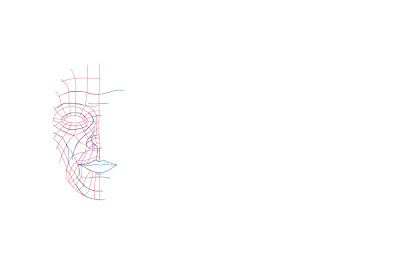 Having completed the slines I then made them into a surface by converting into an editable poly and in the edit geometry selected attach and attched all lines.
Having completed the slines I then made them into a surface by converting into an editable poly and in the edit geometry selected attach and attched all lines.
The topolgy is flat so to give it depth I used my other reference plate. Before this I needed to weld the mesh as the vertices were seperate.

By selecting the middle vertices only I straightned them using make planar tool X. Using the move tool I dragged the vertices on the X axis only.

I made the object see through by using key board short cut Alt X. I continued moving the vertices whilst trying not overlap then too much. Places such as the eye where unavoidable though.

This is how far I got today.








